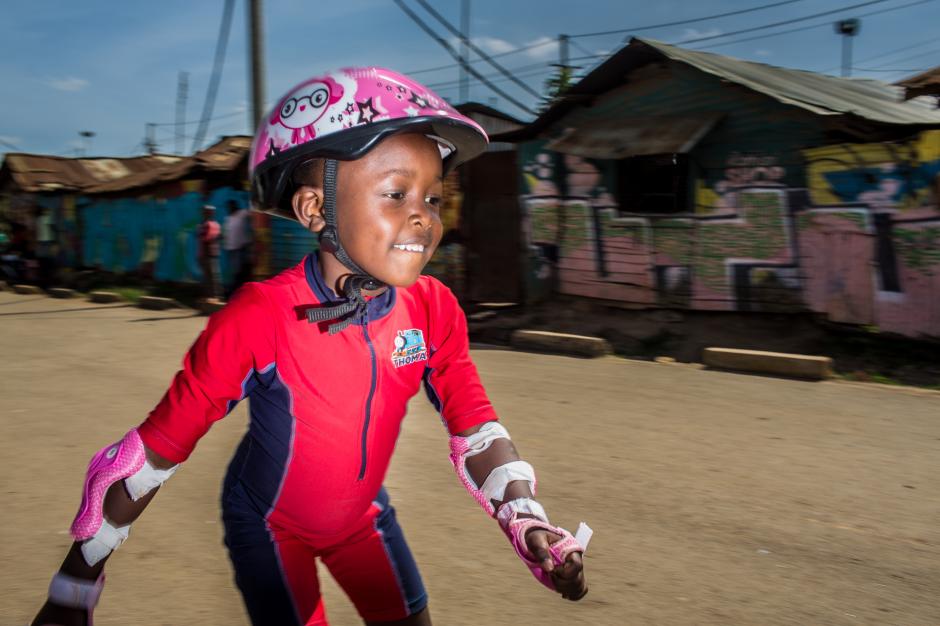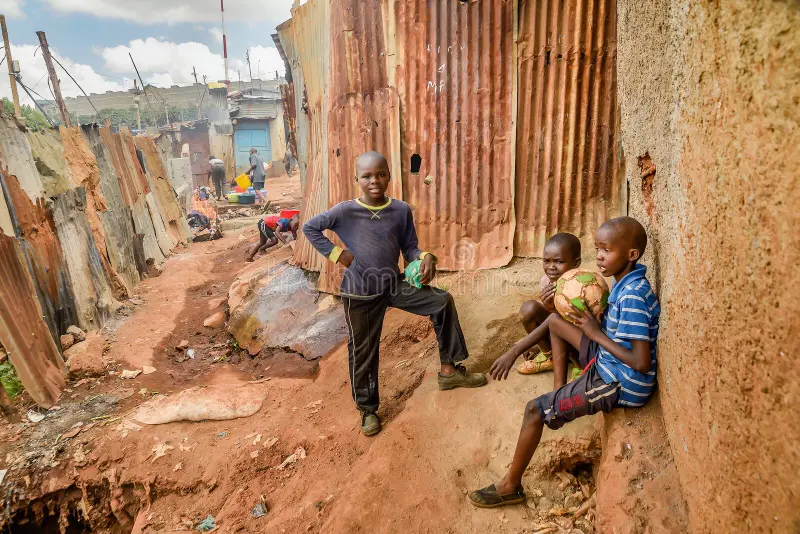Prioritizing Public Spaces as a Means of Achieving Equitable Development in Slum Communities
“─────
Public space is a reflection of how well a city is functioning, both socially and environmentally.
– Enrique Peñalosa, Former Mayor of Bogotá, Colombia
──────”
Imagine living in a cramped space with no room to breathe, let alone enjoy the outdoors. This is the reality for millions of people worldwide who live in slums and low-income areas. Despite the enormous need for public spaces in these communities, they are frequently overlooked and neglected. It is important to emphasize public spaces in these communities for long-term development and equal access.
I got the opportunity to work in Kibera, Africa’s largest urban slum, and it was an experience that changed my life. Kibera is home to nearly one million people who live in deplorable conditions, and the population density in some parts of the slum is reported to be as high as 2,000 persons per acre. The absence of basic necessities such as clean water, power, and good sanitation is only the tip of the iceberg. The lack of public spaces in this community struck me the most.
As I walked through the narrow streets of Kibera, I saw children playing on the streets and women sitting on doorsteps to escape the heat. Children in school uniforms were playing soccer in the dirt streets, dodging cars and motorcycles, while others sat on the steps of their homes, seemingly with nowhere else to go. There was no greenery or recreational areas in sight. The few public spaces that did exist were dilapidated and poorly maintained.
I spoke to a group of young girls who had to walk over two kilometres to the nearest park to play. They told me that they were often scared to go out because of the violence and crime in their area. They had no safe place to play and be kids. This reinforced my belief in the urgency of prioritizing public spaces in slums and low-income communities.

One woman I spoke with, Ann, told me about how difficult it is to find a place for her children to play. She said that the streets are often unsafe, and the few open spaces that exist are often overcrowded. Ann’s experience is not unique. In slums and low-income communities around the world, the lack of public spaces is a significant barrier to children’s development, health, and well-being.
Another resident I spoke with, Nathan, told me about the importance of public spaces for building community. He explained that without public spaces, it’s challenging to get to know your neighbors or find venues to hold and participate in community events. Nathan’s story is a reminder that public spaces are not only essential for physical health but also for social well-being.
“─────
Inclusive public spaces can be transformative, offering opportunities for social interaction, economic activity, and cultural expression.
– UN Habitat
──────”
The Urgency of Addressing the Matter:
The stories of Ann and Nathan are just two examples of the urgent need to prioritize public spaces in slums and low-income communities. Without public spaces, children’s development and well-being are at risk, and communities struggle to build social connections and a sense of belonging. But the benefits of public spaces go beyond individual health and well-being. Public spaces are also essential for sustainable development.
Public spaces are essential for the well-being and development of any community, but they are especially critical in slums and low-income communities. In these areas, residents often lack basic amenities like electricity, clean water, and proper sanitation, making their living conditions challenging. Public spaces provide a much-needed escape from the crowded living conditions, where residents can come together and engage in recreational activities, socialize, and access essential services.
Moreover, public spaces play a crucial role in promoting social inclusion and reducing inequality. In slums and low-income communities, residents often face discrimination and marginalization, making it challenging for them to participate in social, economic, and political activities. Public spaces, however, provide a neutral ground where people of all backgrounds can come together and engage in activities that promote social cohesion and reduce inequality.

When public spaces are prioritized, they can become places where communities come together to address social and environmental challenges. For example, public spaces can be used to promote sustainable transportation, reduce waste, or provide access to clean water. By prioritizing public spaces, we can create communities that are healthier, more resilient, and more sustainable.
Unfortunately, public spaces in slums and low-income communities are often neglected and lack proper infrastructure and maintenance. This makes them hazardous for public use, and often, a breeding ground for disease and crime. As a result, many residents are forced to forgo the benefits of public spaces, further exacerbating social inequality.
“─────
To make our cities more sustainable and liveable, we need to prioritize the needs of the most vulnerable and marginalized communities.
– Jane Weru, Akiba Mashinani Trust
Public spaces are the living rooms of our cities. They should foster social interaction, community building, and collective well-being.
– Amanda Burden
──────”
To alleviate this issue, public areas in slums and low-income neighborhoods must be prioritized. This means investing in the creation and maintenance of public spaces, ensuring equitable access to these spaces, and involving the community in the design and management of these spaces.
Creating public spaces in slums and low-income communities presents unique challenges. The lack of space, resources, and funding makes it difficult to create and maintain these spaces. Additionally, the high population density and lack of infrastructure in these areas mean that public spaces must be designed to accommodate a wide range of activities and functions. There is also a risk that public spaces may be underutilized or vandalized, leading to a lack of interest and maintenance.
To overcome these challenges, community involvement is essential. Engaging residents in the planning, design, and implementation of public spaces increases their sense of ownership and responsibility. Community involvement also ensures that the spaces are tailored to the needs and preferences of the residents, making them more likely to be used and well-maintained. By involving the community, public spaces can be transformed into vibrant and inclusive areas that benefit everyone.

“─────
The creation of equitable public spaces requires collaboration and active participation from the communities they serve.
– Anne-Marie Lubenau
──────”
The Role of Technology in Creating Public Spaces:
Technology has the potential to play a big role in the creation of public spaces in slums and low-income communities. Urban planners and designers can use geographic information systems (GIS) to identify possible public space locations and examine the social and environmental elements that contribute to their success. Furthermore, 3D modeling and visualization tools can assist communities in envisioning the possibilities of public spaces and providing comments on the design. Digital platforms can also be utilized to encourage community interaction by allowing residents to contribute feedback and suggestions. UN-Habitat is making great progress in using the video game Minecraft as a tool to foster community participation in urban design and governance.
When designing public spaces in these communities, sustainable design is crucial. Sustainable design guarantees that public places are both environmentally and socially sustainable. It entails creating energy-efficient environments, utilise renewable resources, and encouraging healthy living. Sustainable design also examines public spaces’ long-term economic and social consequences, ensuring that they benefit the community for many years to come.
“─────
The design of public spaces is not just about aesthetics, it is about creating spaces that support the diverse needs and aspirations of the communities they serve.
– Gehl Institute
──────”
Decolonizing the western idea of public spaces:
To decolonize public places, it is vital to understand and fight these underlying power systems, as well as to emphasize marginalized communities’ perspectives and experiences. Adopting a more inclusive and culturally sensitive approach to developing and administering public places that reflect the diversity and complexity of the people they serve is one way to accomplish this. We can develop more egalitarian and sustainable spaces that promote social justice and communal well-being by decolonizing the Western concept of public spaces.
One example of how public spaces have been westernized and rendered inefficient in the African context is the design of public parks and recreational areas. In many African cities, public parks are designed based on western models that prioritize large expanses of greenery and recreational activities such as jogging and cycling. However, these designs do not take into account the cultural practices and social dynamics of the local communities. For instance, in Kibera slum, Nairobi, public parks are largely unused because they do not reflect the needs and preferences of the residents who prioritize spaces for socializing and communal activities. Thus, a more culturally responsive approach to public park design would involve creating spaces that are flexible and adaptable to different cultural practices and social dynamics.
Another example of the westernization of public spaces in African slums is the lack of consideration for informal economic activities. Informal economies are a significant source of livelihoods for many residents in African slums. However, the design of public spaces often neglects the role of informal economies in shaping the social and economic dynamics of these communities. For instance, in Kibera slum, informal markets are an essential source of food and other necessities. However, the design of public spaces often fails to accommodate these markets, leading to conflicts between market traders and authorities. Thus, a more culturally responsive approach to public space design would involve recognizing the importance of informal economies and designing public spaces that support and enhance their activities.
“─────
We need to decolonize public space design and management by centering the voices and experiences of marginalized communities. – CNU Public Square
The design of public space should prioritize the needs and preferences of local communities, rather than imposing Westernised ideas. – Kofi Boone
──────”
Prioritizing Public Spaces for Sustainable Development and Equitable Access:
“─────
By prioritizing public spaces in low-income communities, we can create more inclusive and sustainable cities that benefit everyone.
– Global Alliance for Urban Crises.
──────”
Prioritizing public spaces in slums and low-income neighborhoods is crucial for long-term development and equal access to public resources. As the examples from Nairobi’s Kibera slum demonstrate, the lack of public spaces in these communities has an impact on not only physical health but also social well-being and economic prospects. To overcome this issue, we must adopt a more culturally sensitive approach to public space design that takes into account the requirements and preferences of local communities.
Decolonizing the Western concept of public space is a necessary first step in creating inclusive and sustainable cities. We can construct public spaces that are flexible, adaptive, and sensitive to the needs of the people who use them if we recognize the cultural practices and social dynamics of the communities we serve. This strategy necessitates community participation in the design and planning process, as they are the best experts on their own needs and goals.
Prioritizing public spaces in slum areas is ultimately about encouraging social justice and empowerment, not just improved infrastructure. By creating safe, accessible, and inclusive public spaces, we can foster a sense of belonging and community that improves everyone’s quality of life. Let us remember the importance of prioritizing public spaces and ensuring that they represent the values and goals of the communities they serve as we seek to construct more sustainable and equitable cities.

“─────
Public space is a right, not a privilege. It should be accessible and inclusive to all members of society.
– Enrique Penalosa
──────”
Join the conversation today!
